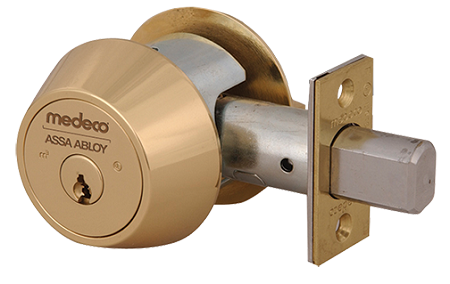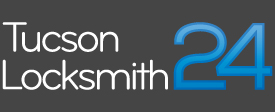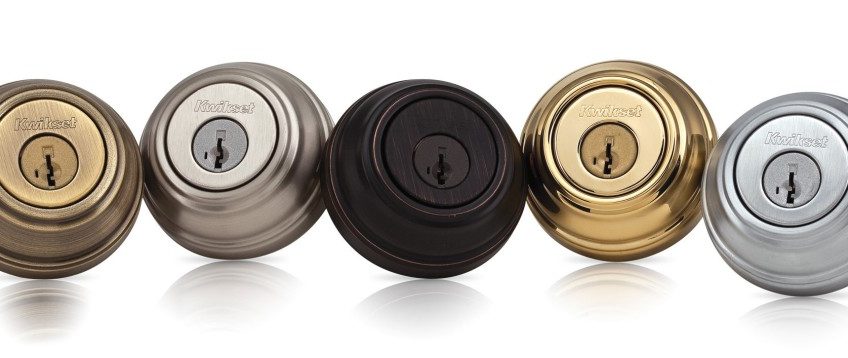Deadbolt Locks
The FBI reports that 60% of home and office break-ins occur with use of force. Take the extra secure step on your home or office doors by having deadbolt locks that provide extra strength when kicked or slammed during an attempted break-in. A deadbolt provides you with an extra step of safety by adding another point of security, and when it comes to burglars, even seconds that cause of delay can mean the difference between them finishing their break-in attempt or finding another victim. Doors usually come standard with a locking system that has a spring inside the handle. Adding a deadbolt provides extra safety measures that prevents break-ins.
The term “dead” bolt means that the part of the lock that extends into the door frame, the bolt, cannot be manually pushed back into the door like the common spring latch can. The bolt in a deadbolt lock can’t be forced open once it is closed, so it is said to be “dead” when it is in the locked position.

The three main parts of a deadbolt lock are:
- Key-accessible cylinder on the outside
- Throw or bolt that slides in and out of the door jamb
- Thumb turn that allows for manual control of the bolt from the inside
Deadbolt Lock Types
There are two main types of deadbolt lock cylinders. Single cylinder deadbolts are the most commonly used. They operate with a twist knob on the inside of the door and have a keyhole on the outside. These are really secure in most cases, though if you have a glass panel door, the glass may be broken to gain access to the inside knob that turns the deadbolt making it less secure when installed on glass panel doors. To remedy this situation, double cylinder deadbolts require a key to operate the lock from both the outside and inside of the door, making it near impossible to break open even if a crook has broken the glass on the glass panel door. However, some fire codes do not allow double cylinder locks because of safety concerns in the case of an emergency where you need to quickly exit only to encounter a lock that requires a key to escape.
Deadbolt locks also have two types of bolts, referred to as the throw. There is a horizontal and a vertical throw. On the standard horizontal throw, the bolt extends one inch beyond the edge of the door into the door jamb.
High Security Deadbolt Lock
Even though deadbolts provide an added layer of security from break-in attempts, sometimes a technique called lock bumping allows a burglar to pick the deadbolt lock. Consider this when selecting your deadbolt lock. Some systems offer a special cylinder and high-security box strike plate that is highly resistant to picking and bumping attempts. Also, the door itself and the door frame play a part in how secure your home or office will be.
Of course, even the most secure deadbolt locks won’t provide the safety you need if you forget to remove your key, and leave it for anyone to use, or if you turn the lock halfway thinking it’s fully engaged. Remedy the latter problem by having a twofold chamber deadbolt, and always ask to have the door jamb secured by fortifying the strike plates with longer screws mounted into wall studs or consider a digital deadbolt lock. The vertical throw, also called a surface mounted deadbolt, engages by interlocking with a set of cast metal rings that are affixed to the frame of the door making it almost impossible to pry open.
Take the extra step to a more secure lock today by calling a licensed locksmith who will install deadbolt locks for you in a hurry!

